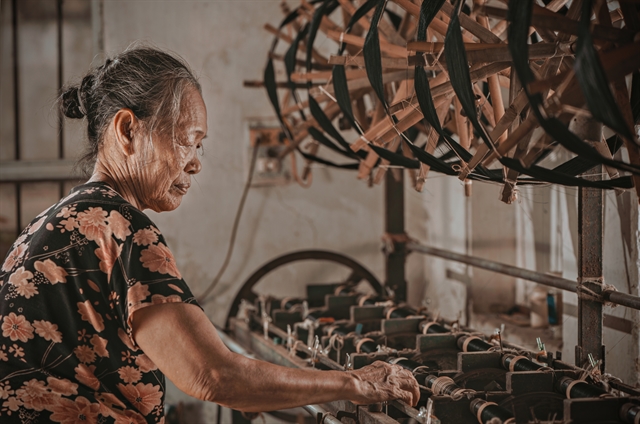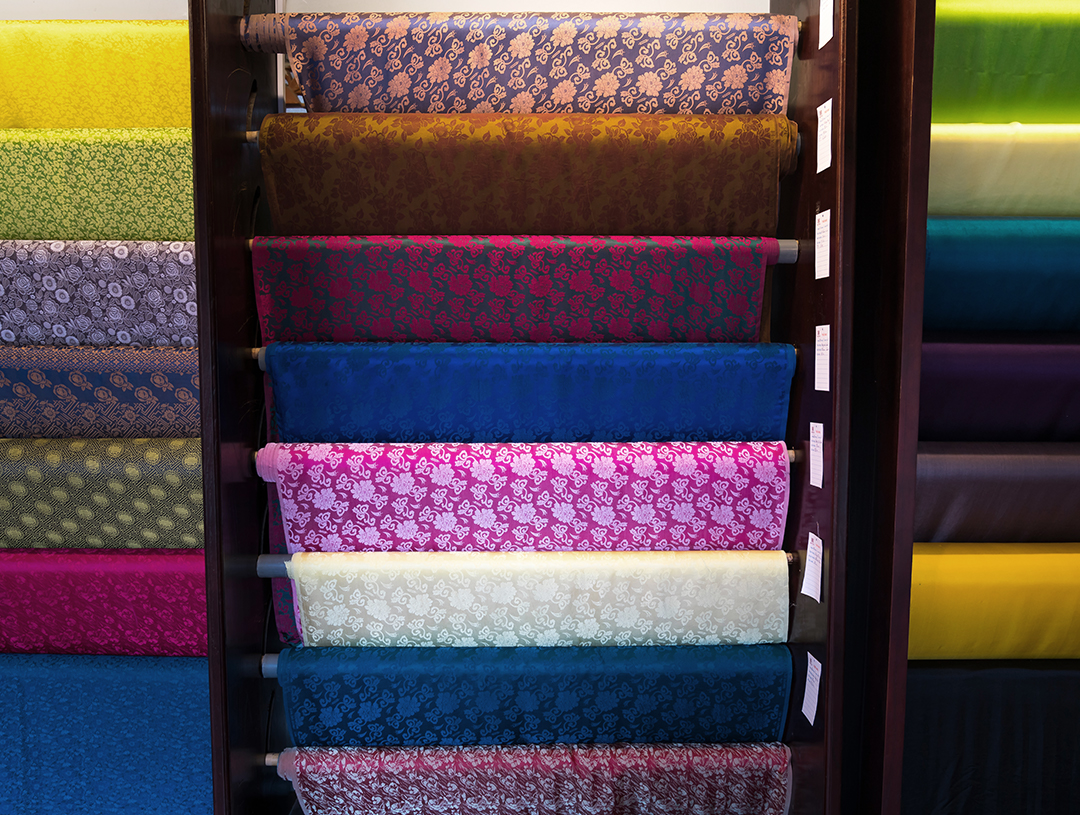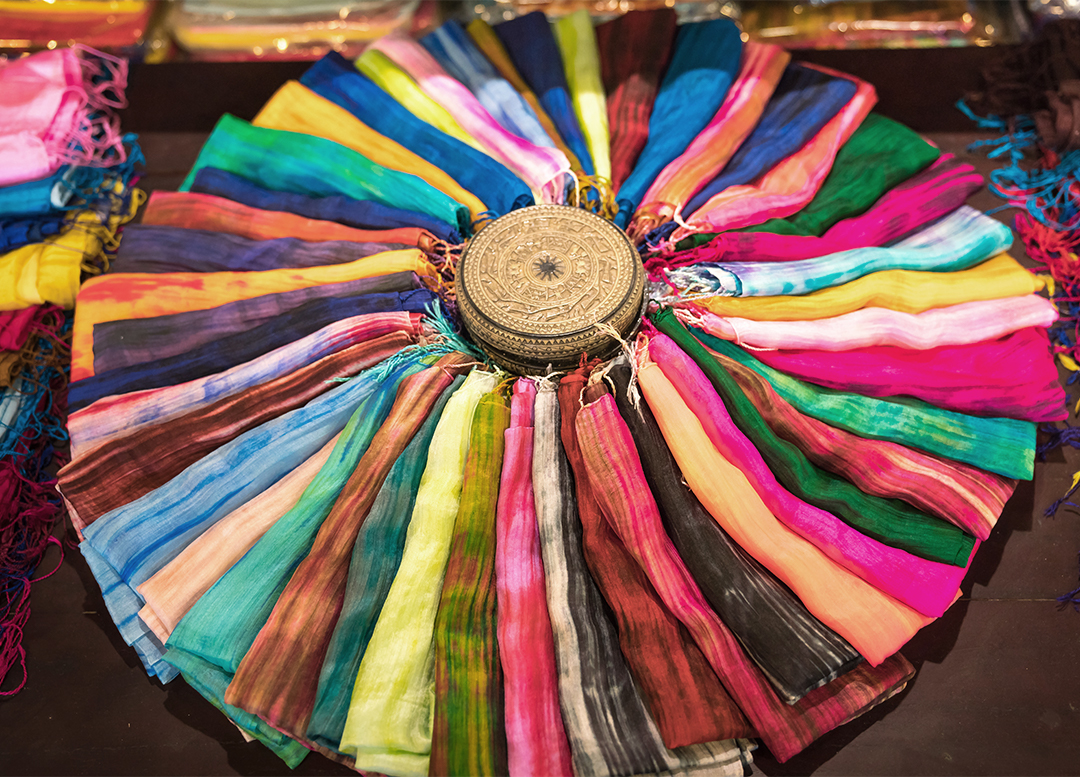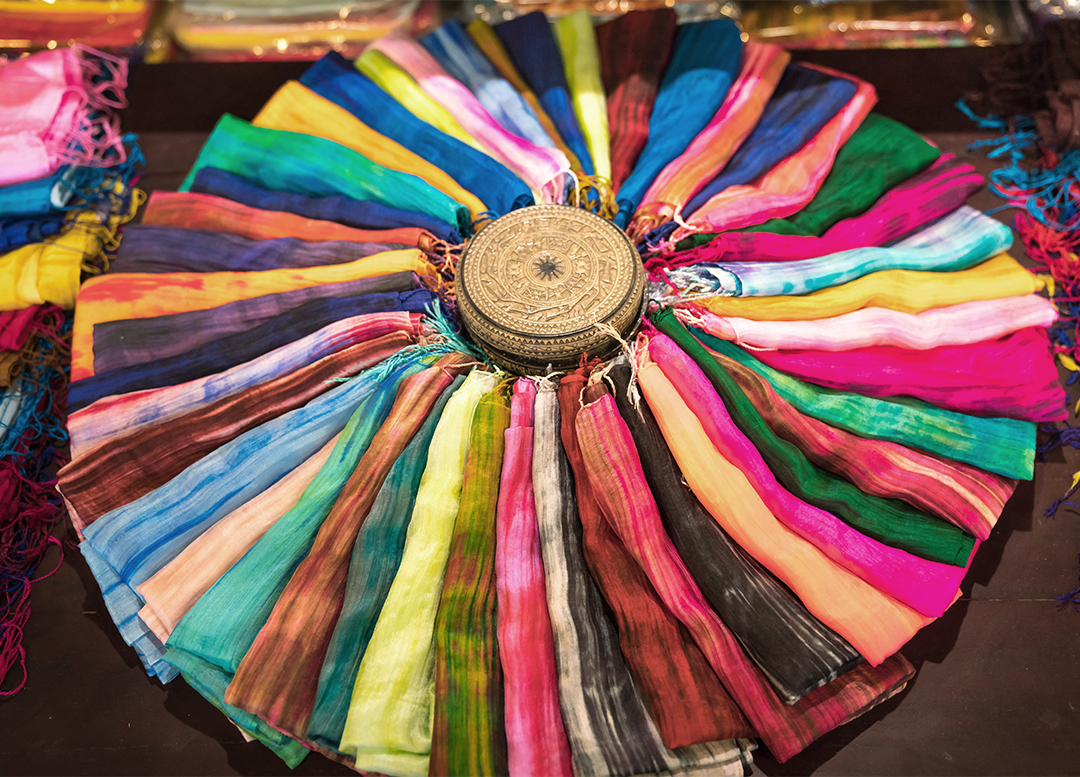Silk, a material renowned for its elegance, luster, and smoothness, has long been associated with luxury and refinement. One place that stands as a testament to the artistry and ingenuity of silk production is the Tân Châu Silk Village in Vietnam. Nestled in the Mekong Delta region, this historic village has captivated visitors for centuries with its exquisite silk-making traditions and cultural significance. In this article, we will delve into the enchanting world of Tân Châu Silk Village, exploring its history, craftsmanship, processes, and the impact it has on both the local community and the global textile industry.
Table of Contents
A Glimpse into History: Origins and Significance
Tân Châu Silk Village holds a significant place in Vietnam’s cultural heritage, with a history dating back over 1,000 years. Legend has it that during the reign of the Ly Dynasty (1010-1225), Princess Huyen Tran, daughter of King Ly Thai Tong, married the king of the Cham Kingdom. As part of her dowry, she brought skilled weavers from Cham back to Vietnam, laying the foundation for the silk industry in Tân Châu.
The village’s strategic location along the Tien River made it a thriving hub for trade, attracting merchants from different regions who sought the finest quality silk products. Through generations, the art of sericulture and silk weaving has been carefully preserved and passed down, making Tân Châu Silk Village an emblem of Vietnam’s rich textile heritage.

Unraveling the Secrets: The Silk Production Process
Silk production is a labor-intensive craft that involves multiple intricate steps, each contributing to the creation of the final masterpiece. Let us delve into the fascinating process behind the birth of Tân Châu silk.
Step 1: Cultivating Silkworms
The journey of silk begins with the cultivation of silkworms. Mulberry leaves, their primary food source, are meticulously grown to ensure optimal nutrition for the silkworms. The worms are raised in controlled environments, and their diet is carefully monitored to produce high-quality silk cocoons.
Step 2: Harvesting and Sorting Cocoons
After four to six weeks, the silkworms mature and begin spinning their cocoons using a single thread that can extend up to 900 meters in length. Skilled workers delicately harvest the cocoons by hand, ensuring minimal damage to the silk filament. The harvested cocoons are then sorted based on quality and size.
Step 3: Reeling Silk Filaments
The next stage involves reeling silk filaments from the cocoons. This process requires immense precision and skill. The cocoons are submerged in boiling water to soften the sericin, a natural gum that holds the silk fibers together. Skilled artisans deftly unwind the silk filament onto a reel, combining several strands to form a stronger yarn.
Step 4: Dyeing and Designing
Once the silk filaments have been reeled, they are ready for dyeing and designing. Tân Châu Silk Village is renowned for its vibrant and captivating color palette. Natural dyes derived from plants, fruits, and even insects are used to create an array of hues. Local artisans employ various traditional techniques such as tie-dyeing, batik, and hand-painting to add intricate patterns and motifs onto the silk fabric, showcasing their creativity and expertise.
Step 5: Weaving Magic
The final stage of the production process involves weaving the silk threads into mesmerizing textiles. Skilled weavers operate traditional looms, creating intricate patterns and designs with meticulous precision. The rhythmic clatter of the looms echoes through the village as artisans dedicate themselves to transforming the silk threads into exquisite fabrics. The resulting silk products showcase the harmonious blend of tradition and innovation that defines Tân Châu Silk Village.
Preserving Cultural Heritage: Pros and Cons
Like any traditional craft, the preservation of Tân Châu Silk Village comes with its own set of advantages and challenges. Let’s explore the pros and cons associated with this endeavor.
Pros:
- Cultural Preservation: Tân Châu Silk Village serves as a living museum, preserving centuries-old techniques, designs, and cultural practices associated with silk production. It contributes to the preservation of Vietnam’s rich heritage for future generations.
- Economic Empowerment: The silk industry in Tân Châu generates employment opportunities for local communities, providing them with sustainable livelihoods and boosting the regional economy.
- Tourism and Trade: The village attracts visitors from across the globe, who come to witness the timeless beauty of silk-making and purchase exquisite silk products. This creates opportunities for cultural exchange and promotes local tourism and trade.
Cons:
- Sustainability Challenges1. Sustainability Challenges: The silk industry, like any intensive agricultural practice, poses sustainability challenges. The cultivation of mulberry trees for silkworm food can lead to deforestation and soil degradation if not managed properly. Additionally, the use of chemical dyes in the dyeing process can have negative environmental impacts if not regulated and monitored.
- Competition from Modern Manufacturing: Tân Châu Silk Village faces competition from modern manufacturing techniques and mass-produced textiles. The charm and uniqueness of handcrafted silk products may struggle to compete with cheaper, machine-made alternatives in terms of price and availability.
- Skills and Knowledge Transfer: As younger generations turn towards alternative career paths, there is a risk of traditional silk-making skills and knowledge being lost. It is crucial to encourage the younger population to embrace this craft and ensure the continuity of Tân Châu Silk Village’s heritage.
Despite these challenges, the preservation and promotion of Tân Châu Silk Village’s cultural heritage remain vital for upholding Vietnam’s rich textile traditions and sustaining the local community.

Alternatives to Tân Châu Silk
While Tân Châu Silk holds a special place in the hearts of silk enthusiasts, there are other silk-producing regions that offer unique characteristics and styles. Here are a few notable alternatives:
- Suzhou, China: Renowned for its delicate and intricate embroidery, Suzhou silk is famous worldwide. The region boasts a long history of silk production and is known for its elegant designs and exceptional craftsmanship.
- Varanasi, India: Varanasi, also known as Banaras, has been a significant center of silk weaving for centuries. The city is famous for its Banarasi silk sarees, known for their opulence, intricate patterns, and gold or silver brocade work.
- Lyon, France: Lyon has been a prominent silk manufacturing hub since the 16th century. The region specializes in producing high-quality silk fabrics, particularly for luxury fashion and interior design.
Each of these alternatives offers its own unique charm and showcases the diversity and creativity within the world of silk production.
Step-by-Step Guide: How to Appreciate Tân Châu Silk
If you’re planning a visit to Tân Châu Silk Village or simply wish to appreciate the beauty and artistry behind Tân Châu silk, here’s a step-by-step guide to help you make the most of your experience:
- Research and Learn: Familiarize yourself with the history, cultural significance, and production techniques of Tân Châu silk. This knowledge will enhance your understanding and appreciation of the craft.
- Visit Tân Châu Silk Village: Embark on a journey to the village itself. Immerse yourself in the surroundings, interact with local artisans, and witness firsthand the various stages of silk production.
- Take a Guided Tour: Engage in a guided tour of the village to gain deeper insights into the silk-making process. Learn about the specific techniques employed by weavers, dyers, and other artisans.
- Explore the Silk Markets: Visit the local markets where silk products are sold. Admire the exquisite fabrics, garments, and accessories on display. Take the opportunity to purchase souvenirs or even commission custom-made pieces.
- Support Local Artisans: Encourage and support the local artisans by purchasing authentic Tân Châu silk products directly from them. By doing so, you contribute to the sustainability of the craft and the livelihood of the community.
By following these steps, you can engage with Tân Châu silk on a profound level and gain a true appreciation for the craftsmanship and heritage it represents.
Comparing Tân Châu Silk with Other Textiles
When comparing Tân Châu Silk with other textiles, several factors come into play. Let’s examine some key aspects:
- Elegance and Luster: Tân Châu Silk is renowned for its natural shine and luxurious appearance. Its inherent elegance surpasses many other textiles, including cotton and polyester.
- Breathability and Comfort: Silk, including Tân Châu Silk, offers excellent breathability and temperature regulation. It provides a comfortable wearing experience, especially in warm climates, unlike synthetic fabrics that can trap heat.
- Durability: Tân Châu Silk, when cared for properly, can last for generations due to its durability and strength. It outperforms delicate fabrics like chiffon or lace, which may require more frequent repairs or replacements.
- Versatility: Tân Châu Silk is a versatile fabric suitable for various applications. It can be woven into clothing, home decor items, accessories, and even artwork. Its versatility adds to its value and appeal.
While Tân Châu Silk possesses unique qualities, the choice of fabric ultimately depends on personal preferences, specific needs, and the occasion or purpose for which the fabric is intended.
Tips for CTips for Caring for Tân Châu Silk
To ensure the longevity and beauty of your Tân Châu silk products, it’s essential to provide proper care. Here are some tips to help you maintain and preserve this exquisite fabric:
- Hand Washing: It is recommended to hand wash Tân Châu silk items using a mild detergent or a silk-specific cleanser. Gently agitate the fabric in lukewarm water, avoiding harsh rubbing or wringing.
- Avoid Bleach and Harsh Chemicals: Do not use bleach or harsh chemicals on Tân Châu silk, as they can damage the fabric and diminish its sheen. Stick to gentle detergents designed for delicate fabrics.
- Air Drying: After washing, lay the silk item flat on a clean towel and gently roll it up to absorb excess moisture. Avoid wringing or twisting the fabric. Allow it to air dry in a shaded area away from direct sunlight.
- Ironing with Care: To remove wrinkles or creases, iron Tân Châu silk on a low heat setting. Place a clean cloth between the iron and the silk to prevent direct contact. Steam ironing is preferred to retain the fabric’s natural luster.
- Proper Storage: Store Tân Châu silk items in a cool, dry place away from direct sunlight, as exposure to sunlight can cause fading over time. Avoid hanging silk garments, as this can stretch the fabric. Instead, fold them neatly and place them in breathable storage bags.
By following these care tips, you can extend the lifespan of your Tân Châu silk products and continue to enjoy their beauty for years to come.
The Best of Tân Châu Silk: Must-Have Products

Within the realm of Tân Châu Silk, several standout products exemplify the craftsmanship and artistry of the village. Here are some must-have Tân Châu silk products that deserve special mention:
- Ao Dai: The traditional Vietnamese Ao Dai made from Tân Châu silk showcases the elegance and grace of this iconic garment. Its flowing silhouette and intricate designs make it a symbol of beauty and heritage.
- Scarves and Shawls: Tân Châu silk scarves and shawls are exquisite accessories that add a touch of luxury to any outfit. Their lightweight nature, vibrant colors, and soft texture make them an ideal choice for all seasons.
- Home Decor Items: Tân Châu silk extends beyond fashion and encompasses a range of home decor items. From cushion covers and table runners to wall hangings and curtains, these pieces imbue spaces with a sense of sophistication and cultural richness.
- Silk Paintings: Artists in Tân Châu Silk Village create stunning silk paintings using the fabric as their canvas. These unique artworks capture the essence of Vietnam’s landscapes, traditions, and folklore, adding a touch of artistic finesse to any space.
Investing in these exceptional Tân Châu silk products allows you to bring a piece of Vietnamese heritage and craftsmanship into your life, creating a connection to the enchanting world of this illustrious village.
Conclusion
Tân Châu Silk Village stands as a testament to the timeless allure of silk production and the preservation of cultural heritage. Through centuries of tradition, skill, and artistry, this village has woven its way into the global textile industry, captivating visitors from near and far. By embracing the intricacy and burstiness inherent in Tân Châu silk, we honor the legacy and craftsmanship of this remarkable village and contribute to the sustainability of its rich heritage. So, whether you’re adorning yourself with an elegant Ao Dai or bringing a touch of opulence to your living space with Tân Châu silk decor, you are embracing a piece of history and indulging in the enchantment of one of Vietnam’s prized treasures.
FAQs
Q1: Is Tân Châu Silk Village open to visitors? A1: Yes, Tân Châu Silk Village is open to visitors, allowing them to witness the silk-making process and explore the rich cultural heritage of the village.
Q2: Are there any specific events or festivals held in Tân Châu Silk Village? A2: Tân Châu Silk Village hosts various events and festivals throughout the year, including silk fashion shows, exhibitions, and traditional craft demonstrations. These events provide an immersive experience for visitors.
Q3: Can I purchase Tân Châu silk products online? A3: Yes, many online platforms and reputable silk retailers offer Tân Châu silk products for purchase. However, it’s advisable to ensure the authenticity of the seller and the product before making a purchase.
Q4: What makes Tân Châu silk unique compared to other types of silk? A4: Tân Châu silk isA4: Tân Châu silk is renowned for its exceptional quality and vibrant colors. The meticulous craftsmanship involved in its production, from cultivating silkworms to hand-weaving intricate patterns, sets it apart. The unique blend of traditional techniques and artistic innovation gives Tân Châu silk its distinct character and appeal.
Q5: Is Tân Châu Silk Village involved in sustainable and eco-friendly practices? A5: Efforts are being made in Tân Châu Silk Village to promote sustainable practices. Some artisans are incorporating organic dyeing methods using plant-based and natural materials, reducing the environmental impact. Additionally, initiatives are focused on responsible mulberry tree cultivation and sericulture management to ensure sustainability in silk production.
Q6: Can I learn silk-making techniques in Tân Châu Silk Village? A6: Yes, Tân Châu Silk Village offers opportunities to learn silk-making techniques through workshops and classes. These experiences provide hands-on learning, allowing individuals to appreciate the artistry and acquire basic skills in silk production.
Q7: Are there any other attractions or activities to explore near Tân Châu Silk Village? A7: In addition to Tân Châu Silk Village, you can explore the scenic beauty of the Mekong Delta region, including boat tours along the river, visits to floating markets, and experiences of the local culture and cuisine. The nearby town of Chau Doc and its landmarks, such as Sam Mountain and Tra Su Cajuput Forest, also offer captivating sights for visitors.
Q8: What is the best time to visit Tân Châu Silk Village? A8: The climate in Tân Châu is tropical, so it is advisable to visit during the dry season, which typically lasts from December to April. This period ensures pleasant weather conditions for exploring the village and its surroundings.
Q9: Are there accommodations available in or near Tân Châu Silk Village? A9: Yes, there are accommodations available in Tân Châu and the surrounding areas. From hotels to homestays, you can find suitable options to stay and immerse yourself in the beauty of the village and its cultural heritage.
Q10: Can I visit Tân Châu Silk Village as a day trip from nearby cities like Ho Chi Minh City? A10: Yes, it is possible to visit Tân Châu Silk Village as a day trip from nearby cities like Ho Chi Minh City. The village is located approximately 120 kilometers (75 miles) from Ho Chi Minh City, making it accessible for a day excursion. However, to fully appreciate the experience, you may consider staying overnight or allowing more time to explore the village and its surroundings.
